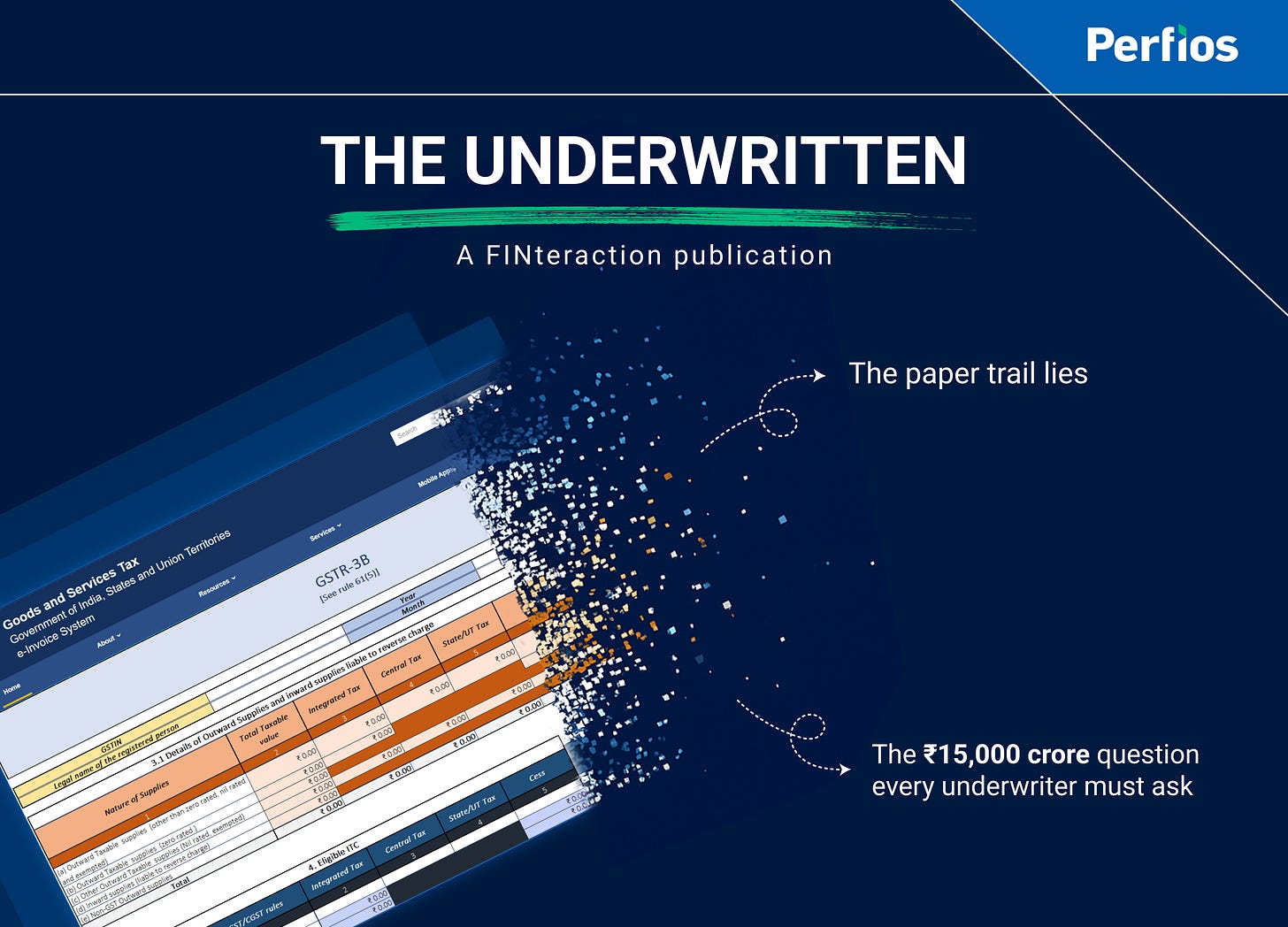The SME gold rush that runs through a GST fraud minefield
India's SME lending sector just revealed its golden opportunity—and its biggest blind spot.
Welcome to The Underwritten, where frontline insights illuminate blind spots in digital lending; underassessed operational risks, undertapped market opportunities, and under-tested strategies worth piloting. Curated intelligence for banking and NBFC leaders underwriting their next big decisions.
India's SME lending sector just revealed its golden opportunity—and its biggest blind spot. In our first edition of The Underwritten, we explore why ₹15,000 crore in tax fraud should terrify every SME lender pursuing growth. While lenders chase the ₹1-10 crore borrower segment driving 42% of commercial credit growth, they run the risk of unwittingly lending to fraudsters weaving highly sophisticated schemes.
The Numbers Behind the Rush
The latest SIDBI-TransUnion CIBIL MSME report unveils a tale of two markets within India's ₹35.2 lakh crore commercial credit landscape. While the overall portfolio expanded at a respectable 13% CAGR over the last five years, one segment rewrote the growth playbook entirely.
The ₹1-10 crore borrower segment has emerged as the undisputed champion, capturing 42% of outstanding balances and 43% of FY'25 disbursements. But here's the stunning reality: business loans in this segment are growing at 33% CAGR—nearly triple the market average. This isn't just outperformance; it's a once-in-a-decade growth opportunity that's reshaping India's commercial credit landscape.
But there's a catch. Central and state GST officers uncovered ₹15,851 crore in fake Input Tax Credit claims involving 3,558 fake firms in just the April-June quarter of the current fiscal—a 29% jump year-over-year. The fraud is growing almost as fast as the opportunity.
When Growth Meets Deception: The 100 crore Hyderabad Masterclass
Consider the recent ₹100 crore tax fraud centered on a Hyderabad-based company. The scheme was elegant in its simplicity: issue high-value invoices for copper supplies to Maharashtra companies, dispatch empty shipments from Telangana, but create documentation showing substantial goods movement. The fraudulent Input Tax Credit claims followed seamlessly.
What makes this case a masterclass isn't its brilliance—it's how criminally easy the red flags are to spot should it arrive at an underwriter’s table. Validating GSTR-1 filings against e-way bills would have exposed the phantom shipments instantly. Cross-referencing GST filings with MCA records would have unmasked the shell companies. Bank statements screamed the truth: inflated turnover without corresponding cash inflows. Basically, triangulation across MCA records, bank flows, and GST data would have torched this scheme.
But here's where theory meets reality: these detection methods only work if you have the time and tools to execute them. The uncomfortable reality is that traditional credit assessment can't scale with 33% growth without cutting corners. When underwriters manually spread financials for hundreds of applications monthly, pattern recognition suffers.
The speed vs. accuracy tradeoff becomes stark. Either lenders slow down approvals and lose market share, or they accelerate decisions and increase fraud exposure. Most choose speed, hoping to catch problems later through monitoring. But it doesn’t have to be that way, it just needs an audit of your technology stack.
The Five Questions That Expose Your Blind Spots
Time for brutal honesty. Every underwriter handling SME applications needs to answer these without flinching:
1. Can your GST analysis actually hunt down circular trading patterns? Or does it just pretty-print tax returns?
2. Does your system validate invoices against e-way bill data? Or are you trusting paper trails that phantom trucks created?
3. Does it cross-reference GST filings with MCA and EPF records? Shell companies leave digital footprints—are you tracking them?
4. Does it trigger alerts for concentration risks? When 70% of transactions flow through entities born last month, that's not business growth—that's artificial inflation.
5. Can your underwriting process triangulate without manual cross-verification? Because human error in a 33% CAGR market isn't just probable—it's guaranteed.
Struggling with GST analysis gaps in your underwriting process? Our team has helped several leading lenders implement integrated fraud detection without compromising approval speed. Book a brief consultation to explore what's possible.


